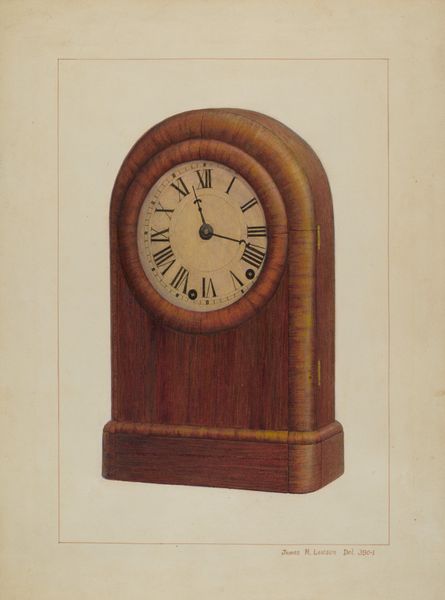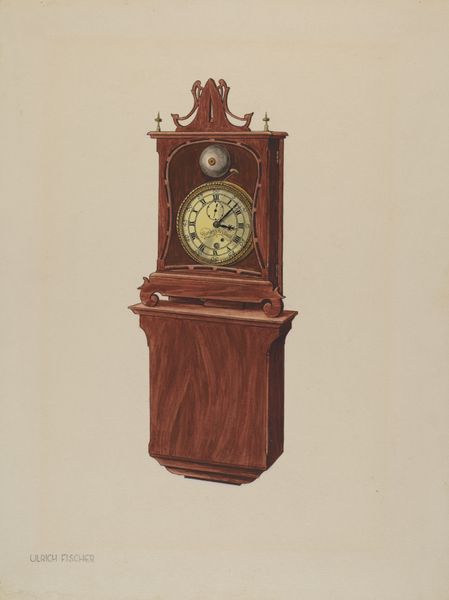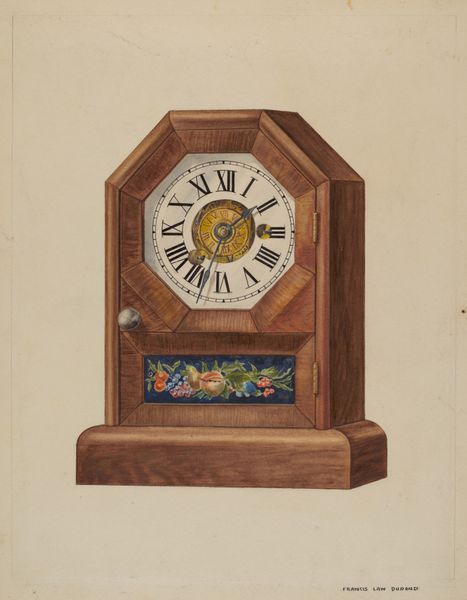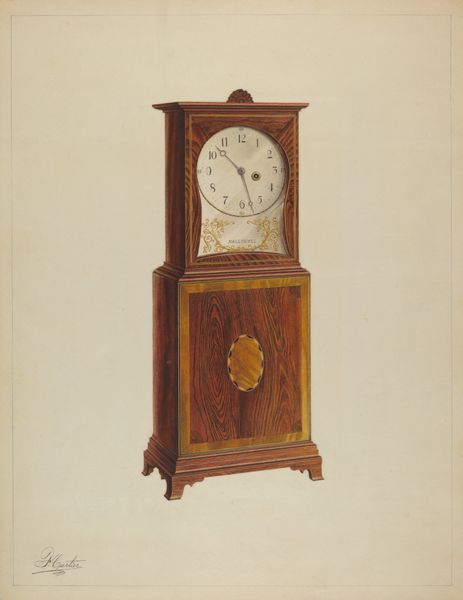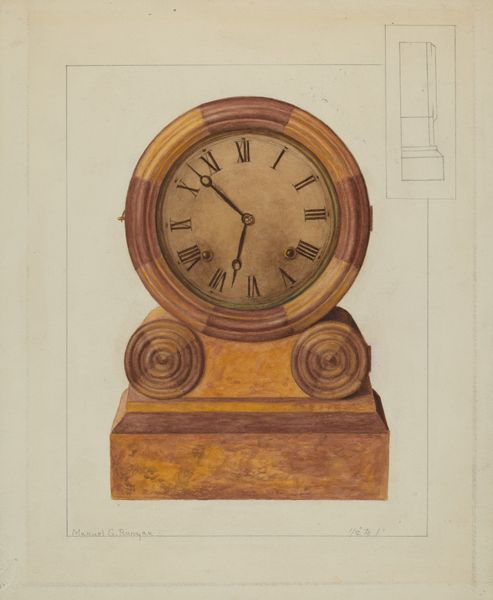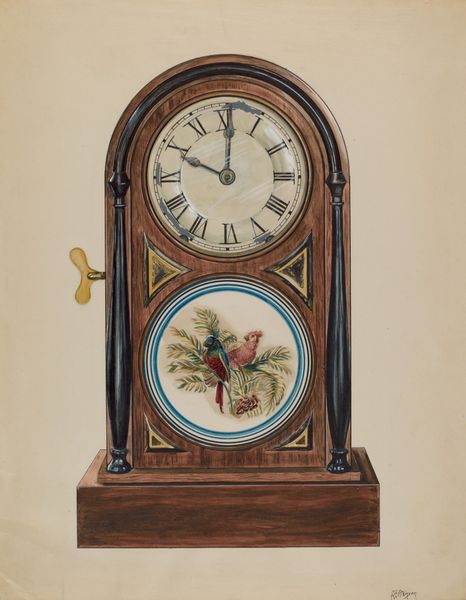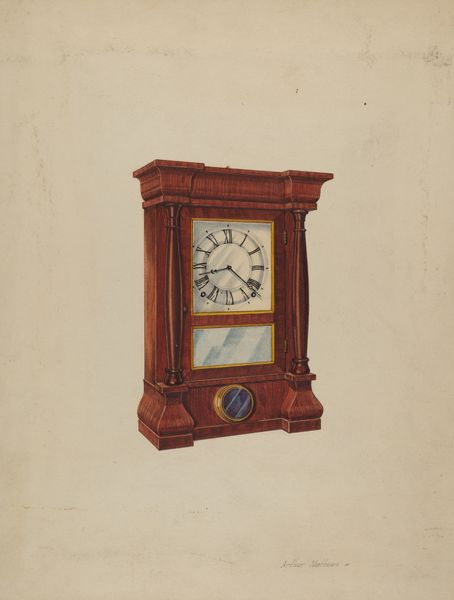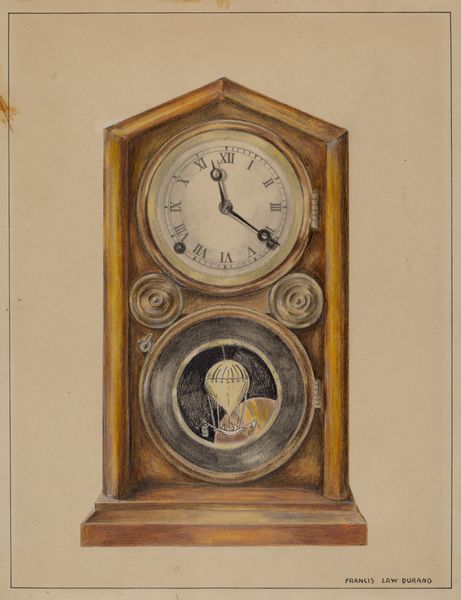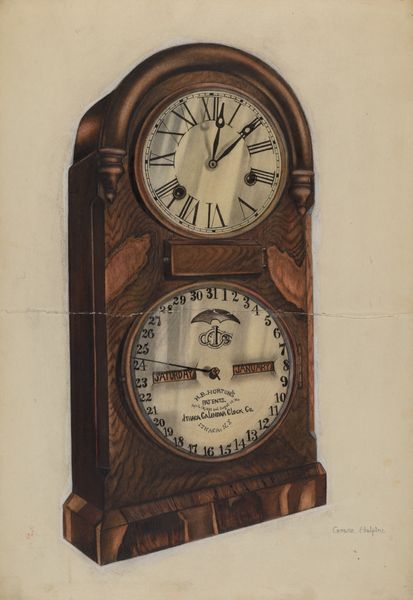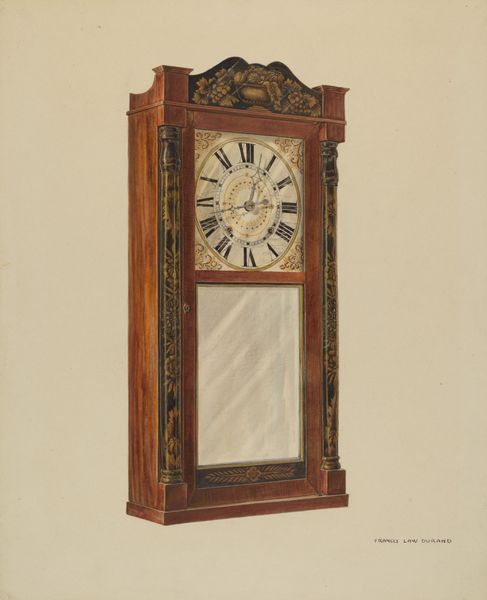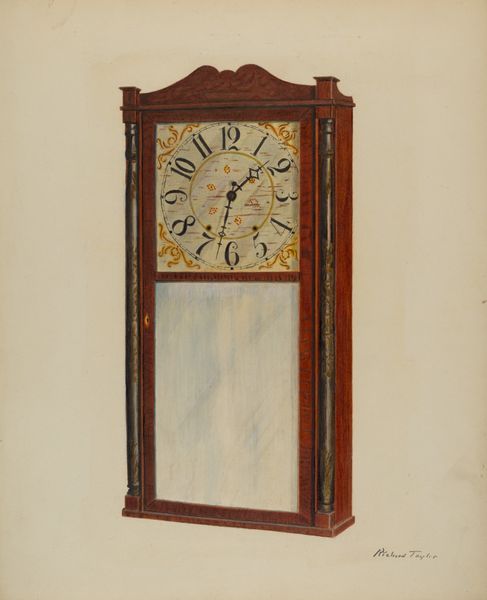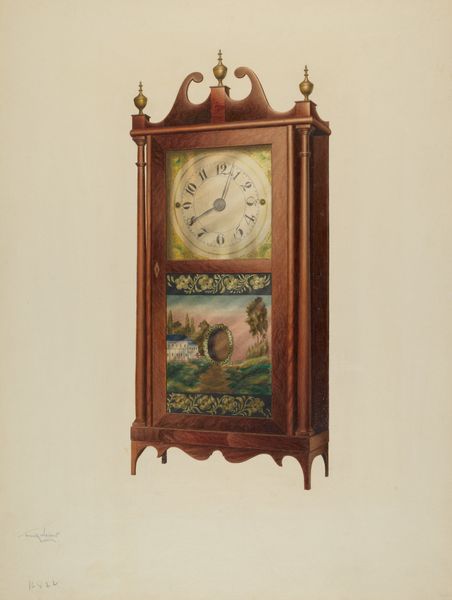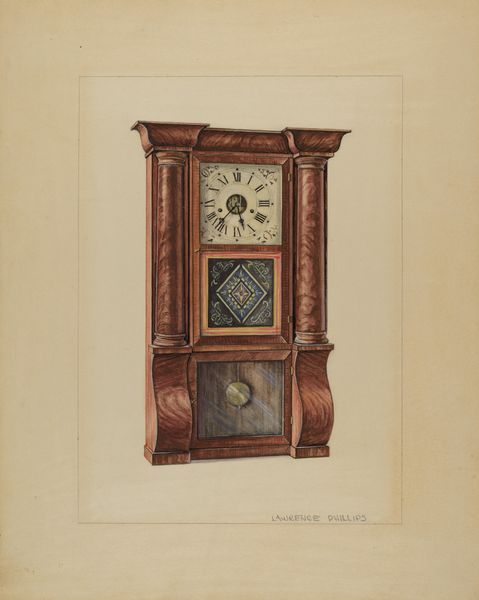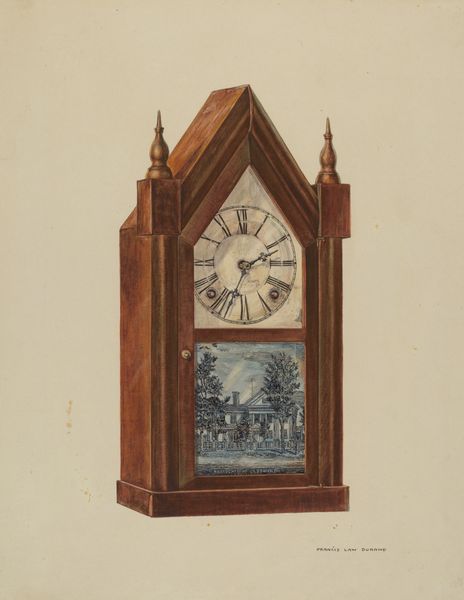
drawing, watercolor
#
drawing
#
water colours
#
watercolor
#
watercolor
#
realism
Dimensions: overall: 50.5 x 38 cm (19 7/8 x 14 15/16 in.) Original IAD Object: 13 1/8"high; 10 1/4"wide at base; 4 1/8"deep
Copyright: National Gallery of Art: CC0 1.0
Curator: This watercolor, titled "Shelf Clock", was created around 1940 by Harry Eisman. Editor: Immediately, I'm struck by the almost melancholic stillness of it. There's a faded quality to the paper and the rendered woodgrain seems to absorb rather than reflect light. Curator: It's interesting you say that. The artist created this drawing during the pre-war era; understanding the sociopolitical climate of the time allows us to consider how ideas around time, industry, and perhaps anxiety manifested in everyday life, and then, here. Editor: Absolutely. Clocks, particularly mantel clocks like this one, served as a fairly common domestic item then, so let’s unpack that. Did such objects promote or deny order during a tumultuous period? Were these household clocks democratizing access to "time," and what anxieties might this then relieve or perpetuate in homes across the USA? Curator: Such drawings could easily highlight the perceived virtues and accessible status enjoyed by modern technological advances in clockmaking. It’s like looking at time from a position of power in middle-class home ownership. These weren't pieces easily affordable during earlier moments of history, especially during the nineteenth century, meaning access to time was an advance accessible across lines of race, gender, and class, as we approached the mid-twentieth century. Editor: A watercolor feels like an interesting choice, however. Watercolors don’t traditionally portray objects associated with industry, machinery or the modern world! Perhaps this piece reflects the way such industrial production and mechanization found ways to pervade intimate areas of home, the stuff that would have previously been personal, slow, maybe "feminine"? Curator: It’s precisely these kind of questions that deepen the impact of otherwise “straightforward” realistic paintings such as this one, in this case dating to the beginning of WW2. Editor: For me, analyzing Harry Eisman’s "Shelf Clock" provides an entryway to discussing issues central to our time and the recent past: what anxieties exist about how “we use our time”, and why the distribution and understanding of "time" have always been sources of power.
Comments
No comments
Be the first to comment and join the conversation on the ultimate creative platform.
